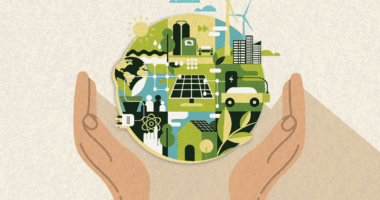Middle-Grades Students Are Up for Discussion — And That Might Be Just What America Needs Right Now
Middle school, where Mercury is in constant retrograde.
Where we quarantine America’s young adolescents in a humid petri dish of hormones, flavored lip gloss contraband, and budding individuality.
It’s where my father teaches. And it’s where I had the pleasure of talking with seventh- and eighth-graders about what gets them excited about learning.
I’ll give you a hint: It’s not worksheets or rote memorization.
The students I had the pleasure of speaking with in this California Bay Area middle school had a message for educators: They want to wrestle with their learning. They want to think. Hard.
And they want to talk about it with their peers.
“I love class discussions,” a towering eighth-grade female point guard spoke up. “Because you get to see everyone’s point of view, their thinking. And it’s better because a lot of other stuff we do feels like busywork sometimes. But I like classroom discussions where you can see how it really relates to your life and stuff.”
Students’ hands shot up to elaborate as if launched not from shoulders but from Cape Canaveral.
A male seventh-grader rocking a meticulously manicured faux-hawk won the floor. “Also when we do classroom discussions, like in social studies or history, it helps when they, like, relate it to things that are happening currently. Like, we talked about back when one group was kind of making another group into — like, villainizing it. And then he related it to, like, how politicians were doing that to refugees. And you kinda, like, connect it more in your head.”
As the conversation continued, punctuated by thrilling tales of dissecting cow eyeballs (which are apparently larger than one would expect), the topic of classroom discussion came up again and again.
And, while heavy in the humanities, the discussions they talked about weren’t just restricted to English and social studies.
“We have a lot of in-class discussions about our writing prompts. And it kind of happens in every class,” shared a female eighth-grader. “In history, we’ll discuss, like, how we’re responding to resources we’re given. Like in biology, we’re in groups and we’re talking about our writing. In English, we work a lot in teams to talk about what our opinions are. Or sometimes we just have a big brainstorm with the entire class about what we think a quote means — or what something we’re learning means. It helps to just bounce ideas off of everyone — just add more, give more insight that you didn’t have before.”
Brimming with quirks and individuality, insecurities and curiosity, these young people — Black, Brown, Asian, and White, and from different neighborhoods and experiences — were hungry to connect. To think together about all that they were learning. To debate and to voice their own ideas. To grow with and be challenged by their peers. To arrive at their own well-thought-out positions.
They wanted a learning and thinking community.
Middle-grades students are primed for these interactions. But as we see in classrooms on a regular basis — and as our research on assignments has revealed — students don’t receive nearly enough opportunity for these types of authentic conversations.
As the America outside their school doors clashes along partisan lines and civic dialogue is choked into hashtags and 140 character missiles, these students — representing the breadth of American experience — sit together in our classrooms. In these petri dishes of hormones, flavored lip gloss, and budding individuality, tomorrow is being incubated. May educators nurture it with the kinds of rich opportunities for real conversation and meaningful debate that students hunger for — and that America, frankly, needs more of right now.
Discuss.
For more on creating space for discussion and deep learning through classroom assignments, check out our Equity in Motion work for practitioners.
Photo credit: Niche.com









